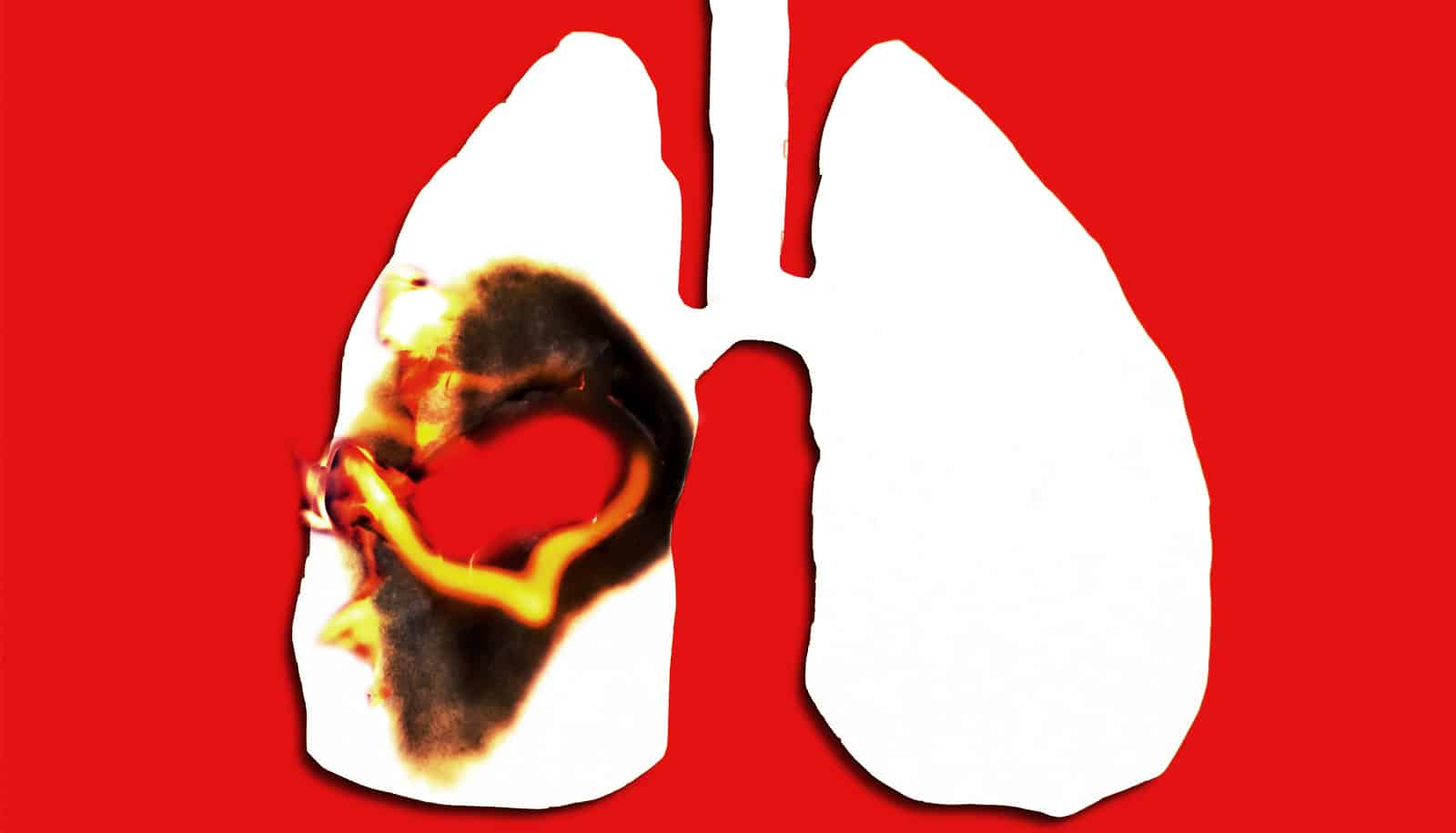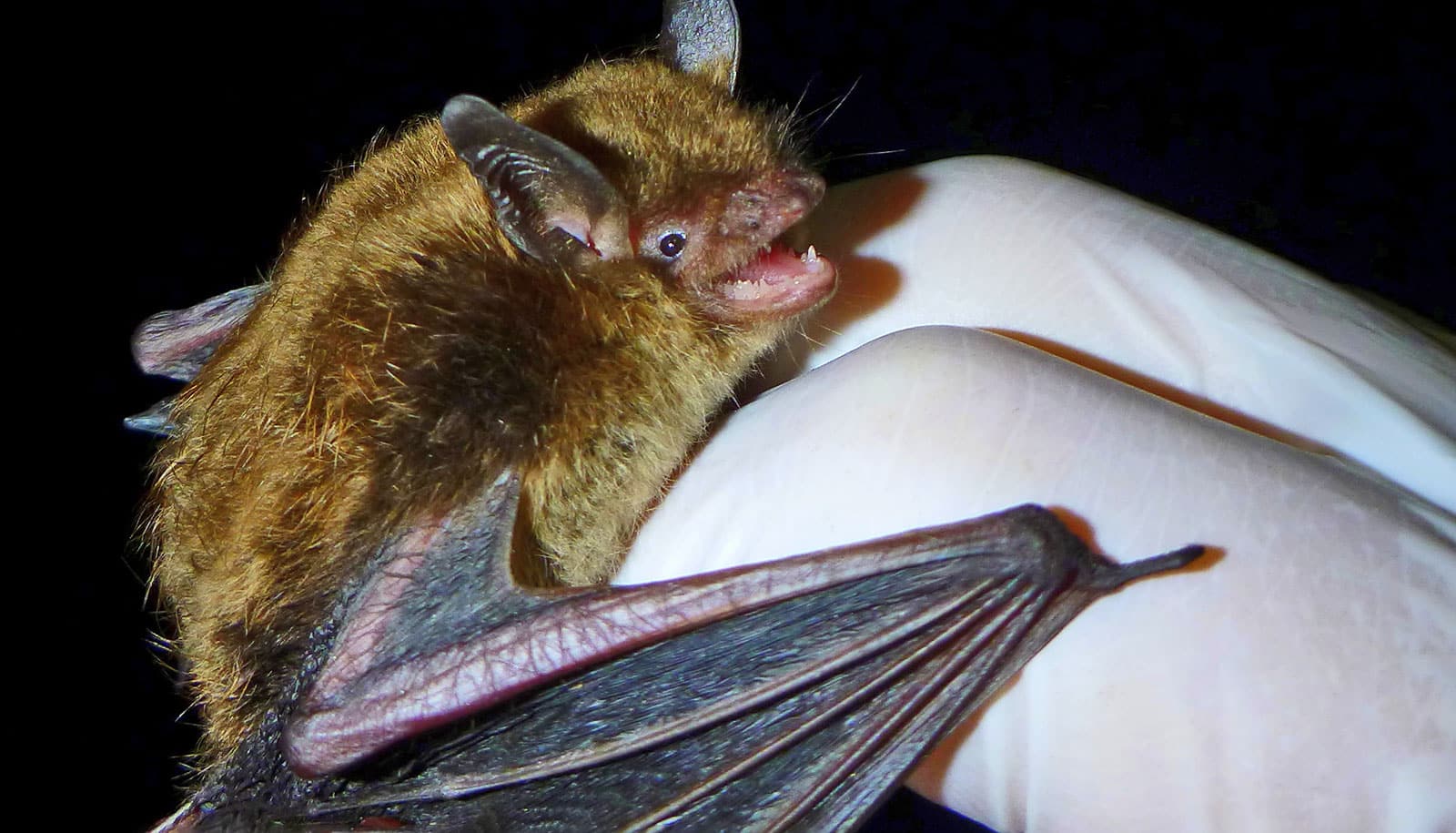New research reveals key physical properties of “giant” cancer cells.
Polyploidal cancer cells—cells that have more than two copies of each chromosome—are much larger than most other cancer cells, resistant to chemotherapy and radiation treatments, and associated with disease relapse.
Like the allegorical tortoise, giant cancer cells move slower than other cancer cells, but go further.
The research, which appears in Scientific Reports, shows that the giant cells are stiffer and have the ability to move further than other cancer cells, which could help explain why they’re associated with more serious disease.
“I think these polyploidal giant cancer cells are the missing link for why tumors become so complex and heterogeneous so quickly,” says corresponding study author Michelle Dawson, an assistant professor of molecular pharmacology, physiology, and biotechnology at Brown University. “By understanding the physical properties of this weird population of cells we might identify a new way to eliminate them. Patients will benefit from that.”
For the study, the researchers focused on a common strain of triple negative breast cancer, an extremely aggressive and hard-to-eradicate kind of breast cancer.
A drug that softens giant cancer cells wouldn’t be a possible treatment for triple negative breast cancer, as it would turn a hypothetical patient into mush.
They found that 2-5 percent of cells from this breast cancer strain were polyploidal giant cancer cells with four, eight, or 16 copies of each chromosome, instead of the normal two. The cells with more chromosomes were proportionally larger, which is similar to polyploidal cells in other organisms. Commercially available strawberries, for example, tend to be much larger than wild strawberries because the cells of commercial varieties have eight copies of each chromosome.
After treating the breast cancer cells with a common chemotherapy, the team found three to 10 times more giant cancer cells. This both confirmed that the giant cells were more drug resistant and gave the researchers more giant cells to study.
Then first study author Botai Xuan, a graduate student at Brown, injected nano-sized fluorescent beads into the cancer cells—both polyploidal giant cells and normal—using a specialized technique involving high pressure helium gas. He found that the beads moved about twice as slow inside the giant cells, indicating the cells were stiffer. This stiffness allows the giant cells to get so big, Dawson says.
The research also found that giant cells had more actin, a biopolymer that forms wire-cable-like structures inside cells to help give the cells their shape and allow them to move. When cancer cells move, they can spread or metastasize, a word no patient wants to hear. Giant cancer cells move differently than standard cancer cells, too. Like the allegorical tortoise, they move slower than other cancer cells, but go farther.
Would dialing down this enzyme treat breast cancer?
The researchers tested a drug that interferes with actin and found it softened the giant cancer cells, but Dawson cautions this wouldn’t be a possible treatment for triple negative breast cancer, as it would turn a hypothetical patient into mush. One next step for her research, however, is to look at the giant cancer cells at the molecular level to try to find specific differences in order to develop a targeted treatment.
“This first paper really just gave us a lot of structural information,” Dawson says, adding they need to do more research to understand any differences between polyploidal giant cancer cells found before chemotherapy, polyploidal giant cancer cells formed during treatment, and the daughter cells they “bud off” in a very atypical manner.
They’re also going to look for polyploidal giant cancer cells in samples from patients.
Though the study focused on giant cancer cells found in a strain of triple negative breast cancer, the researchers found giant cancer cells in other kinds of breast cancer, as well as strains of ovarian and prostate cancer.
Cancer Genome Atlas reveals ‘splicing’ weakness in tumors
“The giant cancer cells break all the cancer rules—they are stiffer, they are larger, they have a very abnormal and non-polarized cell structure—and they can move a long way,” Dawson says. “Without basic science research, we don’t get creative new ideas that lead to breakthrough treatments for patients.”
The National Institute of Health NIGMS through COBRE Center for Cancer Research Development funded the research.
Source: Mollie Rappe for Brown University



